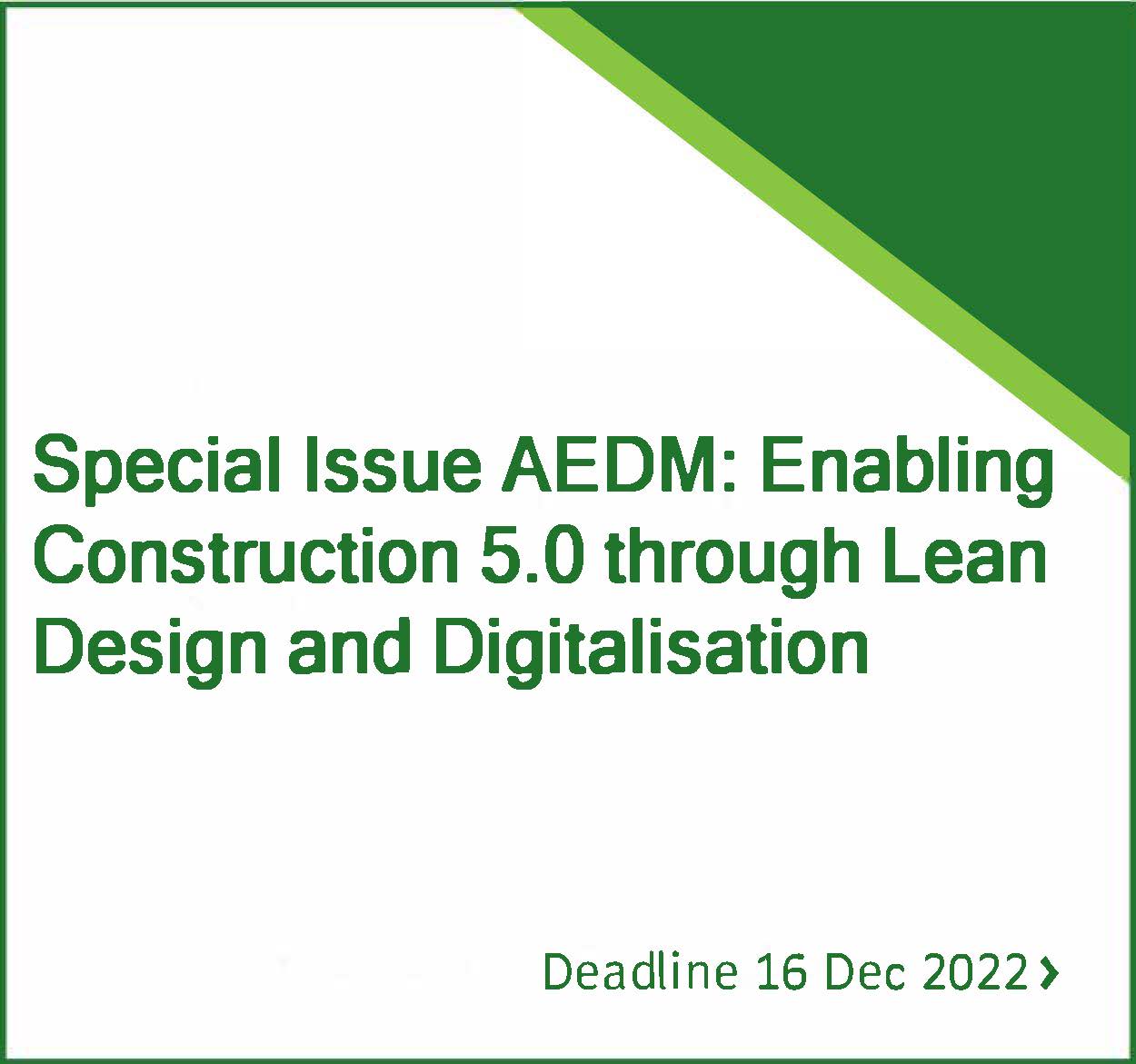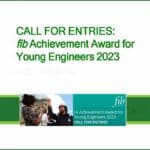Special Issue of the Architectural, Engineering, and Design Management (AEDM) Journal entitled Enabling Construction 5.0 through Lean Design and Digitalisation is the 16th of December 2022
Lean Production is a managerial philosophy originated in the automobile industry (Womack et al., 1990). For many years, researchers and practitioners explored the implementation of Lean concepts and principles in construction project management, both in the design and construction stages. In the Lean conceptual framework, design is regarded as a flow, in which information is transformed, transferred, and assessed (Koskela, 2000). That perspective is the starting point for several innovations which have contributed to eliminating waste and improving value generation in construction design.
A wide range of digital technologies have recently been considered and adopted across the construction industry, such as big data and analytics, autonomous robots, simulation, horizontal and vertical system integration, internet of things, cybersecurity, cloud technology, additive manufacturing, and augmented reality (Wang et al., 2020). The use of those digital technologies has been described as the transition of the construction industry into the Fourth Industrial Revolution (Industry 4.0). Industry 4.0 can be defined as a technology-driven paradigm change in managerial models to increase supply chain integration and achieve higher efficiency and flexibility (Dallasega et al., 2018; Xu et al., 2021). Building Information Modelling (BIM) plays a central role in this transition. It provides digital machine-readable documentation of construction facilities, enables the efficient exchange of information, and creates opportunities for changes in roles and relationships among project team members (Sacks et al., 2018).
Recently, a new vision for the digitalization and development of the industry has emerged, named Industry 5.0. It is based on the assumption that a new industrial paradigm should contribute to achieving societal goals beyond improving efficiency, economic growth and job creation (European Commission, 2021). In fact, many of the Industry 4.0 digital technologies are considered to be relevant for Industry 5.0. (Maddikunta et al., 2022). The main change proposed in this new vision relates to the purpose of the new technologies, which must be based on three interconnected core values (Xu et al., 2021):
- Human-centricity: core human and societal needs and interests should be at the heart of design and production processes (also known as Society 5.0 as discussed by Fukuyama, 2018);
- Sustainability: carbon neutral and circular processes that re-use, re-purpose and recycle natural resources, as well as reduce waste and environmental impact should be developed, leading to a circular economy; and
- Resilience: refers to the need to prevent the occurrence of disruptions by providing or supporting critical infrastructure in times of crisis. The 2008 financial crash, the Covid-19 pandemic, and the current global warming crisis have brought to attention the need to re-think existing working methods and approaches in order to reduce the vulnerability of supply chains.
The aim of this special issue is to discuss the future of architectural and engineering design management by exploring the contributions of Lean concepts and methods and digital technologies, considering the vision provided by the Industry 5.0 paradigm. Contributions concerned with the interactions between Lean concepts and principles and the functionalities of emerging technologies and their role in human centric approaches are expected. Potential themes for papers include, but are not limited to:
- Digital support for client requirements management
- BIM to support Lean Design
- Integrated project delivery and target value design
- Evolution and perspectives of Construction 4.0 and 5.0
- The role of technology and human interaction in design
- Blockchain, Machine Learning and Artificial Intelligence
- Automated control in design
- Use of model data for predictive analysis of building performance
- Modularity and platform products
- Circular economy and sustainability
- Visual management and digitalization
- Learning approaches in design by using Lean and BIM
- Production system design for flow and value with the support of BIM
- Lean and agile methods for digital design
- Role of digitalization in retrofit projects
- Design planning and control systems
- Automated generation of drawings and design documents
- Automated design checking and waste elimination
- Management of industrialized building systems with the support of Lean and BIM
- Using BIM and Lean to support mass customization
- Lean and digital facilities management
- Collaboration, co-creation and early involvement of stakeholders in digitally enabled projects
- Digital Twins, Internet of Things (IoT), Internet of Behaviour (IoB) and Empowered Edge



